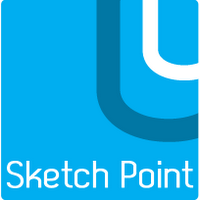W3C standards define an Open Web Platform for application development that has the unprecedented potential to enable developers to build rich interactive experiences, powered by vast data stores, that are available on any device. Although the boundaries of the platform continue to evolve, industry leaders speak nearly in unison about how HTML5 will be the cornerstone for this platform. But the full strength of the platform relies on many more technologies that W3C and its partners are creating, including CSS, SVG, WOFF, the Semantic Web stack, XML, and a variety of APIs.
W3C develops these technical specifications and guidelines through a process designed to maximize consensus about the content of a technical report, to ensure high technical and editorial quality, and to earn endorsement by W3C and the broader community.
If you are learning about Web technology, you may wish to start with the introduction below, and follow links for greater detail.
Web Design and Applications
Web Design and Applications involve the standards for building and rendering Web pages, including HTML5, CSS, SVG, Ajax, and other technologies for Web Applications (“WebApps”). This section also includes information on how make pages accessible to people with disabilities (WCAG), internationalized, and work on mobile devices.Semantic Web
In addition to the classic “Web of documents” W3C is helping to build a technology stack to support a “Web of data”, the sort of data you find in databases. The ultimate goal of the Web of data is to enable computers to do more useful work and to develop systems that can support trusted interactions over the network. The term “Semantic Web” refers to W3C’s vision of the Web of linked data. Semantic Web technologies enable people to create data stores on the Web, build vocabularies, and write rules for handling data. Linked data are empowered by technologies such as RDF, SPARQL, OWL, and SKOS.XML Technology
XML Technologies including XML, XQuery, XML Schema, XSLT, XSL-FO, Efficient XML Interchange (EXI), and other related standards.Web of Services
Web of Services refers to message-based design frequently found on the Web and in enterprise software. The Web of Services is based on technologies such as HTTP, XML, SOAP, WSDL, SPARQL, and others.Web of Devices
W3C is focusing on technologies to enable Web access anywhere, anytime, using any device. This includes Web access from mobile phones and other mobile devices as well as use of Web technology in consumer electronics, printers, interactive television, and even automobiles.Browsers and Authoring Tools
Web agents are intended to serve users. In this section you will find information useful when designing browsers and authoring tools, as well as search engine bots, aggregators, and inference engines.



No comments:
Post a Comment